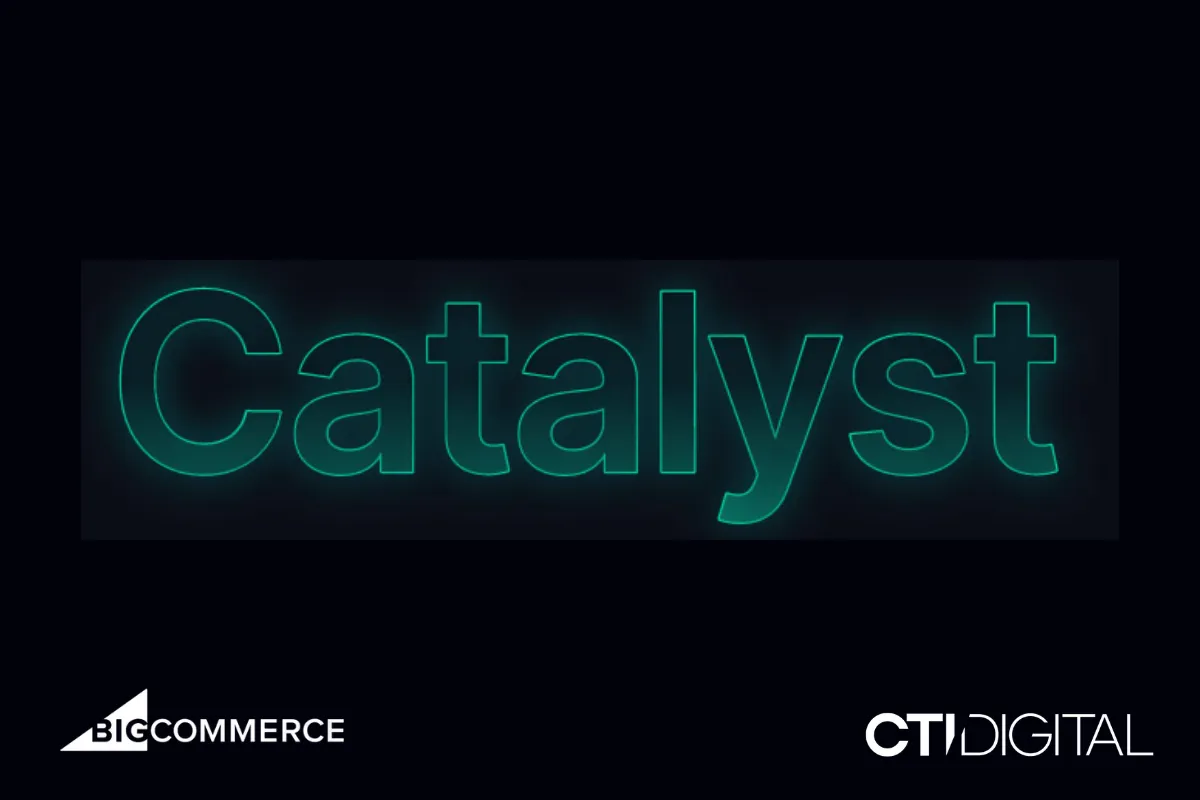Catalyst by BigCommerce, developer-first headless commerce is here

Following our analysis of the Hydrogen framework by Shopify, we thought it only fair to take a closer look at the excellent headless framework from BigCommerce: Catalyst. As the eCommerce landscape continues to progress and mature, merchants are seeking new ways to stand out and create flexible, scalable solutions that deliver exceptional digital experiences for their customers.
Headless commerce frameworks have become popular for businesses looking to decouple their front-end and back-end systems, enabling greater control over the user experience (UX). One such framework in the BigCommerce ecosystem is Catalyst, which is designed to provide a developer-first approach to building powerful headless solutions.
In this article, we’ll explore the pros and cons of using the Catalyst headless framework for BigCommerce, discuss why businesses might consider this approach, and compare the benefits and risks of using traditional Stencil-based BigCommerce themes.
What is this Catalyst? An Overview
Catalyst is a headless framework specifically designed to work with BigCommerce. It provides developers with the tools and flexibility to build fully customisable front-end experiences for BigCommerce-powered stores. By adopting a headless approach, Catalyst allows businesses to use modern technologies such as React and Next.js to build storefront components. At the same time, BigCommerce handles the back-end operations, including inventory management, payments, and order processing.
Unlike traditional stencil-based BigCommerce themes, Catalyst decouples the front end from the platform’s core functionality, giving developers complete control over the design and user experience. This approach enables merchants to create highly branded, tailored, fast, and engaging digital storefronts that meet the needs of modern consumers. BigCommerce functionality is then plugged in using the BigCommerce GraphQL storefront API & Rest management API.
The Pros of Using the Catalyst Headless Framework
So Much Flexibility
Catalyst allows merchants to build completely bespoke storefronts that align with their brand identity, customer needs and creative ambitions. Traditional BigCommerce themes can be limiting when it comes to design and functionality, but with Catalyst, designers and developers have the freedom to create unique experiences that stand out in a competitive market. This is enabled by the theme being completely separated from BigCommerce, with integrations into the system happening via API, so you are free to pull in the functionality you need where you need it within the UX.
Improved Performance and Speed
One of the biggest advantages of using a headless framework like Catalyst is the ability to optimise performance. By leveraging modern front-end frameworks such as Next.js, developers can implement server-side rendering (SSR) and static site generation (SSG), resulting in faster load times and improved SEO ranking factors. Faster load times are critical for reducing bounce rates, enhancing user experience, and increasing conversion rates, all of which are key to eCommerce success. It’s worth emphasising here that although Catalyst provides the technologies and tools needed to make a really fast UX, it must still be built with speed in mind (well-optimised images & carefully considered integrations) to realise these speed improvements.
Seamless Integration with APIs
Catalyst makes it easy to integrate third-party services and APIs into your storefront. Whether integrating a personalisation engine, advanced search functionality, or a marketing automation tool, Catalyst provides the flexibility to enhance your storefront with the latest technologies. Whilst this is listed as a benefit of Catalyst, it could equally be a negative as it does often mean that you need to build your own integration where if you used a traditional stencil theme, you would be able to take advantage of an off-the-shelf app from the BigCommerce marketplace.
Future-Proof Technology Stack
Catalyst is built on modern JavaScript frameworks like React and Next.js, which are widely adopted by the web development community. This makes it easier to find developers with the necessary skills to build and maintain a headless storefront, which can reduce concerns about vendor tie-ins and being left with a system other agencies will not want to work with. Moreover, making your BigCommerce store headless makes it easier to swap out your eCommerce platform and other composable components of your tech stack. Whilst this would still be a significant amount of work, it can be done without a complete rebuild of the front end which should reduce overall delivery time.
The Cons of Using Catalyst Headless Framework
Increased Development Complexity
One of the main drawbacks of using a headless framework like Catalyst (or other alternatives) is the increased complexity involved in building and maintaining a storefront. Unlike traditional themes, which offer a more plug-and-play approach, Catalyst requires skilled developers to manage the front-end code and ensure seamless integration with BigCommerce’s back-end. As a result, enabling new features within BigCommerce will require the frontend to be developed to accommodate that feature and API work to link the feature into the headless frontend template. This can lead to higher initial development costs and longer implementation timelines.
Higher Maintenance Costs
A headless storefront requires ongoing maintenance to keep the front end and back end functioning smoothly. This can involve updating APIs, managing hosting environments, and troubleshooting issues that arise from third-party integrations. This can be an additional expense for businesses without an in-house development team and needs to be factored in when reviewing the Total Cost of Ownership (TCO) of such a solution.
Potential Hosting and Infrastructure Challenges
Unlike traditional BigCommerce themes, which are hosted and managed by BigCommerce, a headless solution built with Catalyst will require separate hosting for the front end. While many hosting providers offer solutions for headless sites, businesses need to ensure that their chosen provider can handle the specific requirements of a Catalyst storefront. Our infrastructure teams are always happy to talk through infrastructure requirements for headless projects and can advise on tech specifications, security and redundancy for mission-critical storefronts.
Limited Native App Compatibility
Many BigCommerce apps are designed to work seamlessly with traditional themes. In a headless environment, most technology integration will require custom API integration. This could limit the ability to quickly add new features and functionality to your storefront, as you may need to build custom solutions instead of relying on out-of-the-box apps. However, this could also be seen as a benefit, as it means all integrations are known and customised to your requirements, which can reduce bloat on your website or slow-loading plugins.
Catalyst vs. Traditional BigCommerce Themes: Key Considerations
| Feature | Catalyst Headless Framework | Traditional BigCommerce Theme |
| Customisation | High | Limited |
| Development Speed | Slower | Faster |
| Performance | Optimised with modern techniques | Dependent on theme |
| Personalisation | Highly customisable | Limited |
| Hosting | Requires custom hosting | BigCommerce-managed |
| App Compatibility | Require custom integrations | Out-of-the-box |
Is Catalyst Right for Your Business?
The decision to use Catalyst as a headless framework depends on your business goals, resources, and technical capabilities. Here are some scenarios to help guide your decision:
When to Consider Catalyst:
- You want a highly customised storefront that differentiates your brand and breaks the mould creatively from a conventional eCommerce store.
- Your business has complex requirements or user journeys that cannot be met with traditional themes.
- You have access to skilled developers or a super-skilled development partner like CTI Digital, who can manage a headless build.
- You prioritise performance, scalability, and personalisation over speed of delivery and budget.
When to Stick with Traditional BigCommerce Themes:
- You need to launch your store quickly
- You have limited development resources or budget.
- Your business model doesn’t require extensive customisation or your clients are not discerning when it comes to creative execution.
- You rely heavily on BigCommerce Marketplace apps for functionality.
The CTI Digital View
Catalyst offers a powerful solution for businesses looking to build custom, high-performance storefronts on the BigCommerce platform. Its flexibility, scalability, and future-proof technology stack make it an attractive option for merchants seeking to create unique digital experiences. However, it also comes with increased complexity, higher development costs, and potential hosting challenges.
For businesses with the resources to manage a headless build, Catalyst can unlock new opportunities for innovation and growth. But for those looking for a simpler, faster path to market, traditional BigCommerce themes may be a better fit.
At CTI Digital, we have extensive experience working with headless frameworks and can help you navigate the complexities of a Catalyst build. Whether you’re considering headless for the first time or looking to optimise your existing eCommerce storefront, we’re here to guide you every step of the way.
Reach out to us to learn more about how we can support the next chapter in your eCommerce journey.

Mike is an eCommerce solution architect, helping to shape ecommerce solutions for B2C & B2B clients on open source and cloud commerce platforms.
